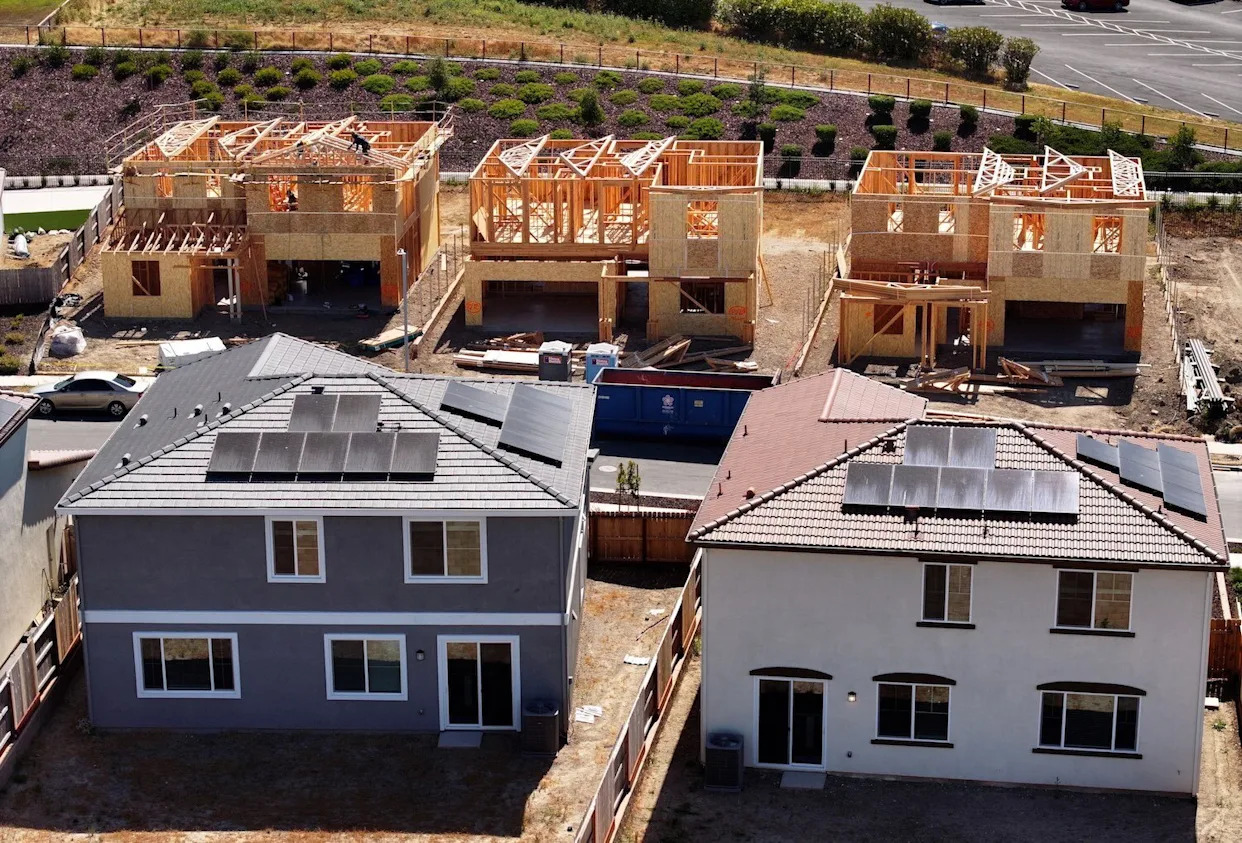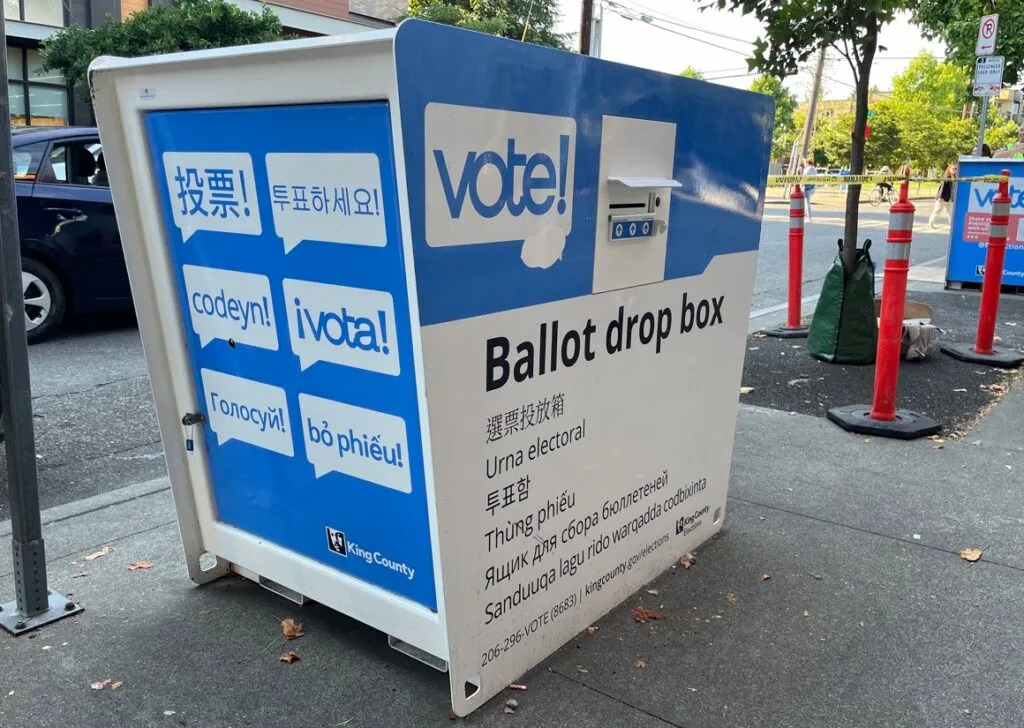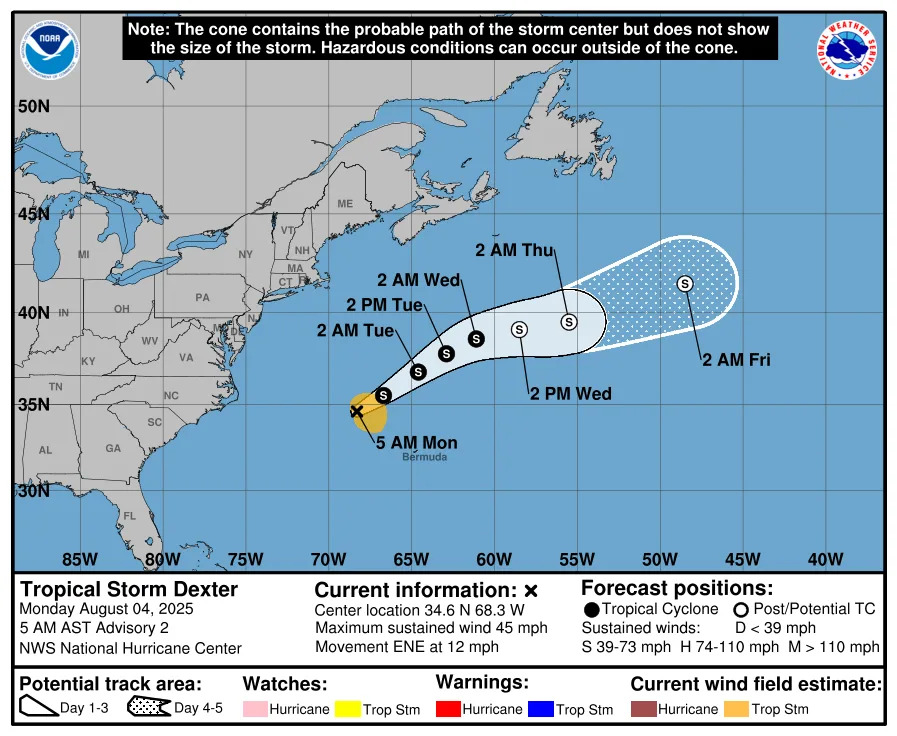
At the end of June, California Gov. Gavin Newsom (D) signed into law AB 130, a sweeping bill that aims to make it easier to build housing, reforms that many lawmakers and experts agree are long overdue given the state’s severe housing crisis.
But one provision could needlessly slow the state’s progress on its climate and clean energy goals, according to advocates. The law pauses updates to state and local building codes — the mandatory construction standards meant to ensure that new buildings are safe and energy efficient — for the next six years.
Buildings account for a quarter of California’s carbon pollution. And the state’s building standards, which are normally revised once every three years, have been a powerful decarbonization tool. The latest statewide energy code, already finalized, takes effect Jan. 1, 2026, and encourages developers to build all-electric homes with both heat pumps and heat-pump water heaters — super-efficient, zero-emissions appliances that are safer than gas-fired options. In addition to updating codes, California has eliminated subsidies for new gas lines.
These regulations are working; “California is an electrification-forward state,” said Sean Armstrong, managing principal of Redwood Energy, a design firm specializing in net-zero, all-electric affordable housing development. In 2023, 80% of line extension requests by builders to utilities Pacific Gas & Electric and San Diego Gas & Electric were electric-only, according to the California Energy Commission, the agency responsible for developing the building energy codes. The commission expects that the majority of new houses built under the latest code will be all-electric.
Now, though, the state will skip a scheduled 2028 residential code update, blocking it from pushing builders to go further to cut emissions. Starting Oct. 1 this year, the new law will also prevent local jurisdictions from updating their own, more ambitious building standards, known as reach codes.
These could include measures not yet enacted in the state rules, such as encouraging heat pumps for multifamily buildings, mandating all-electric renovations, and requiring that broken central air conditioners be replaced with heat pumps that can both warm and cool spaces. That last idea is an inexpensive way to decarbonize heating, according to Matt Vespa, senior attorney at nonprofit Earthjustice.
Seventy-four local governments in California have passed reach codes that encourage or require all-electric new construction. With the pause on updates looming, San Francisco is now racing to get an all-electric requirement for major renovations on the books before the Oct. 1 deadline.
Exception redemption? A path forward
AB 130 does allow for some exceptions that could let local governments implement stricter building requirements even after the cutoff date.
The law permits the state commission and local governments to update building codes in emergencies to protect health and safety. Perhaps the climate emergency will qualify, said Kelly Lyndon, cochair of the advocacy alliance San Diego Building Electrification Coalition.
Cities and counties can also adopt updates that are necessary to carry out greenhouse gas emissions reduction strategies spelled out in their state-mandated general plans. These road maps must have been adopted by June 10, 2025, and code updates can’t ban gas.
“At least one of these exceptions is going to work for folks who want to make further progress on climate,” said Merrian Borgeson, director of California policy with the Natural Resources Defense Council’s Climate & Energy Program. “Unfortunately ... [AB 130] makes it more complicated and creates more red tape.”
Vespa pointed out that many jurisdictions may be able to take advantage of the exception for preexisting aims to reduce greenhouse gas emissions. Among the 482 city plans, 409 mention “greenhouse gas” — an indicator that local leaders are pursuing emissions cuts. The phrase also shows up in 52 of 58 county general plans.
Sacramento’s general plan, for example, stresses “a continued focus on improving the performance of both new and existing buildings.” A local code update to swap old air conditioners with heat pumps could fit within AB 130’s exemption, Vespa said.
But it’s too soon to say who might try the strategy first. “Some jurisdictions are really looking towards their legal experts to interpret [the exception language],” said Madison Vander Klay, senior manager of government affairs at the nonprofit Building Decarbonization Coalition.
But even with its exclusions, the moratorium “is a big problem for emissions, affordability, and cost savings,” Vander Klay said.
Assembly Speaker Robert Rivas (D) and Assemblyperson Nick Schultz (D), who authored the initial standalone bill to pause building codes, AB 306, championed the idea as a way to help solve California’s housing affordability crisis and spur rapid recovery after the wildfires that torched areas of Los Angeles County in January. That bill eventually got folded into AB 130.
“California home prices are double the national average, and the rent is too damn high. So many folks cannot afford to live in California,” Schultz said on the Assembly floor in April. “This pause ... will provide stability and certainty in the housing construction market by temporarily freezing the standards by which people need to meet to construct their home.”
It’s unclear whether the bill will actually make homes more affordable, though. “Building codes have never been what drives high costs in California — certainly not the energy code,” Borgeson said.
A 2015 study conducted by the University of California LA for Pacific Gas & Electric backs that up; the authors noted that they couldn’t find a statistically significant relationship between California’s energy-efficiency code and home construction costs.
“There isn't a lot of evidence that waiving codes helps affordability,” Vander Klay said. “The building codes overall are required [by law] to be cost-effective.” Any up-front costs must be outweighed by savings.
The standards have delivered, sparing Californians more than $100 billion in avoided energy costs over the last five decades, according to the Energy Commission. The code that takes effect next year is expected to net more than $4.8 billion in savings over 30 years.
Research also shows that building all-electric homes is typically faster and cheaper than building those with gas. A 2019 analysis by energy consultancy E3, for example, estimated that building a new all-electric home in most parts of California costs about $3,000 to $10,000 less than building a home that’s also equipped with gas. Similarly, a 2022 study by the New Buildings Institute found that constructing an all-electric single-family home in New York costs about $8,000 less than a home with gas. A UC Berkeley team used these and other findings to conclude in an April report that the most cost-effective way to rebuild after the LA fires is likely all-electric.
With the moratorium, the commission will have to skip the 2028 residential code cycle. That omission could result in tens of millions of dollars in lost utility bill savings for households, according to the Building Decarbonization Coalition. Notably, the commission will be able to work on the following code update, so it can take effect as planned in 2032.
In the wake of AB 130, the Building Decarbonization Coalition’s Vander Klay is urging the Legislature to reauthorize California’s successful cap-and-trade program to support home electrification by making heat pumps and other decarbonizing tech more affordable. “There is still an opportunity ... this year for the state to look at carving out funding to provide incentives,” she said.
In passing AB 130, state lawmakers took aim at rules that they contend stifle development. Underpinning this strategy is a notion popularized by a recent book, “Abundance.” Authors Ezra Klein of The New York Times and Derek Thompson, contributing writer at The Atlantic, make the case that well-intentioned but overly protective regulations can foster scarcity — in this case, of housing — and thus interfere with leaders’ ability to deliver on the promises of a better life.
But Vander Klay argues that lawmakers should view strong building codes as a way to help create abundance. “Abundance is this idea that we should all have access to housing, we should all be able to afford our energy bills ... we should all be able to have access to clean air and clean water and healthy homes,” Vander Klay said.
Clean energy technologies like heat pumps are part of an abundant, safer, more climate-resilient future, she noted. “We have building codes as a tool to support building what we need safely and quickly and affordably.”








Comments